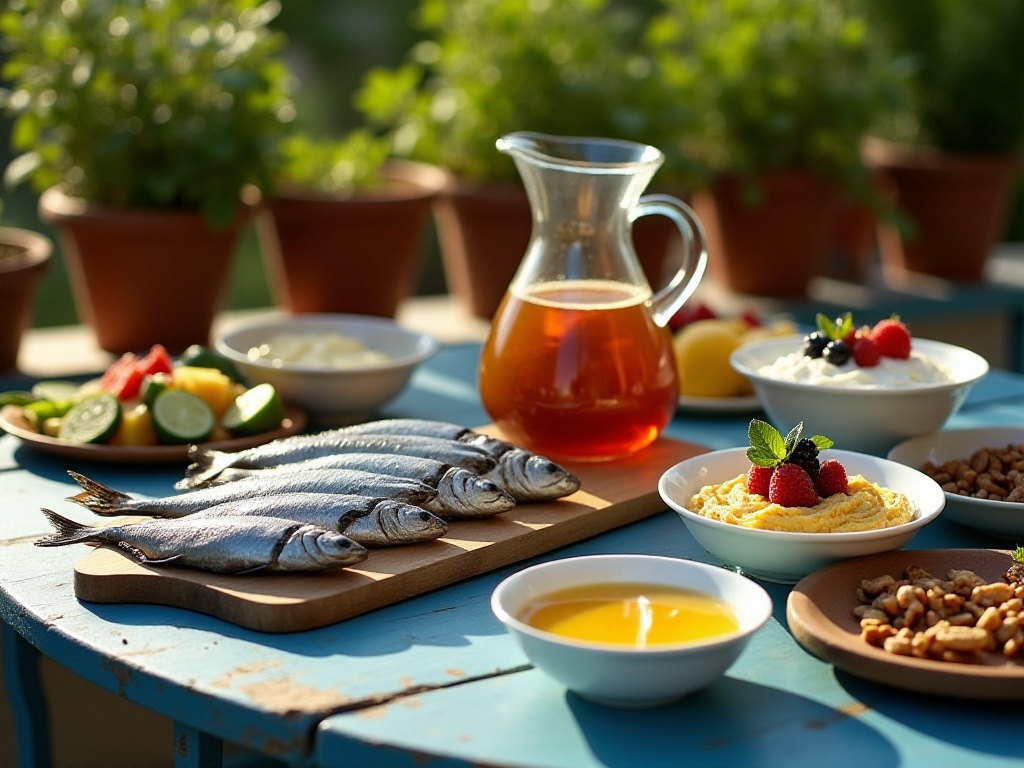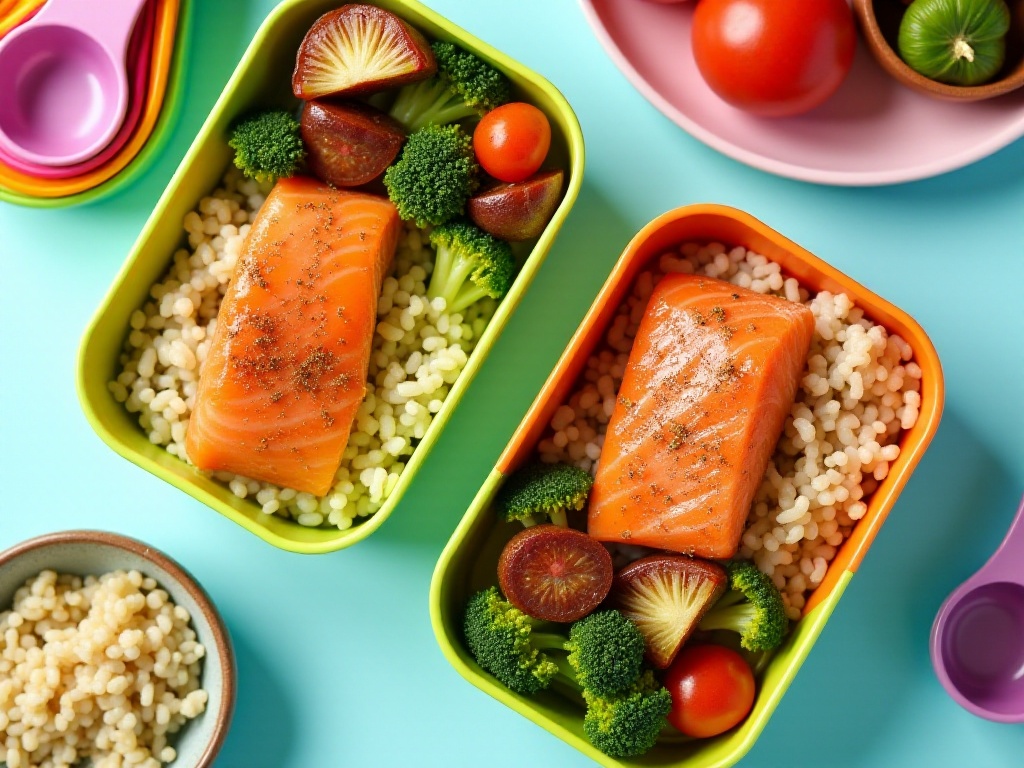Opening Words
Today I'd like to talk about a topic I'm particularly interested in - how to eat healthier. As a former "junk food lover," I totally understand that irresistible urge for chips, burgers, and bubble tea. Back then, while gaming late at night, I always had a bag of spicy chips and an ice-cold cola on my desk - it was pure bliss! However, after living like this for a while, I clearly felt drained and lacking energy. Through years of learning and practice, I've truly realized: eating right can change your life. Now, I wake up naturally, have better skin, more energy, and even my mood has become super positive!
The Nutrition Code
When it comes to healthy eating, many people's first reaction is "eat less." But the key isn't how much you eat, but what and how you eat. Let's decode nutrition together - it's not some profound science, but practical wisdom that everyone can understand and apply.
Carbohydrates are our body's main energy source. But choosing the right ones is crucial - quality carbohydrates should be rich in dietary fiber. For example, brown rice, whole wheat bread, and unpeeled potatoes are all excellent choices. I particularly love brown rice - though it felt strange to chew at first, after persisting for a while, I really came to love its natural grain fragrance and chewy texture. Most importantly, it's very filling, unlike white rice where you get hungry again shortly after.
I remember my first attempt at whole wheat bread was a disaster! It was dry and hard, like chewing cardboard. Later I discovered that whole wheat bread tastes much better when paired with fruit jam or peanut butter. Now my favorite breakfast is whole wheat toast with banana slices and peanut butter - nutritious and delicious!
Regarding protein, many people find it hard to gauge the right amount. There's actually a simple calculation method: 10-35% of your total caloric intake should come from protein. For example, if you consume 2000 calories daily, your protein intake should be between 50-175 grams. Chicken breast, fish, and soy products are all good protein sources. However, I should mention that many people think they need to eat tons of chicken breast for fitness and muscle gain, but there's no need to be so extreme. Tofu, eggs, and shrimp are all excellent protein sources.
I highly recommend salmon, though it's a bit pricey, its nutritional value is irreplaceable. It's rich in omega-3 fatty acids, which are great for brain development and cardiovascular health. Plus, baked salmon is super simple to make - just add some salt and black pepper, a few lemon slices, bake for 15 minutes, and it's ready to serve, smelling absolutely delicious!
As for fats, don't be fooled by "fat-free" labels. Good fats are very important for our bodies - they help absorb vitamins and maintain hormone balance. Olive oil, nuts, and avocados all contain healthy fats. I eat a handful of nuts every day, rotating between peanuts, almonds, and cashews - they're both snacks and nutrition supplements.
Vitamins and minerals are equally important, and the best way to supplement them is by eating various vegetables and fruits. I ensure I consume at least 500g of vegetables daily, and fruits about two to three fist-sized portions. Speaking of which, many people think vitamin pills are enough, but they can't completely replace natural foods. The dietary fiber and phytochemicals in fruits and vegetables can never be replicated in pills.
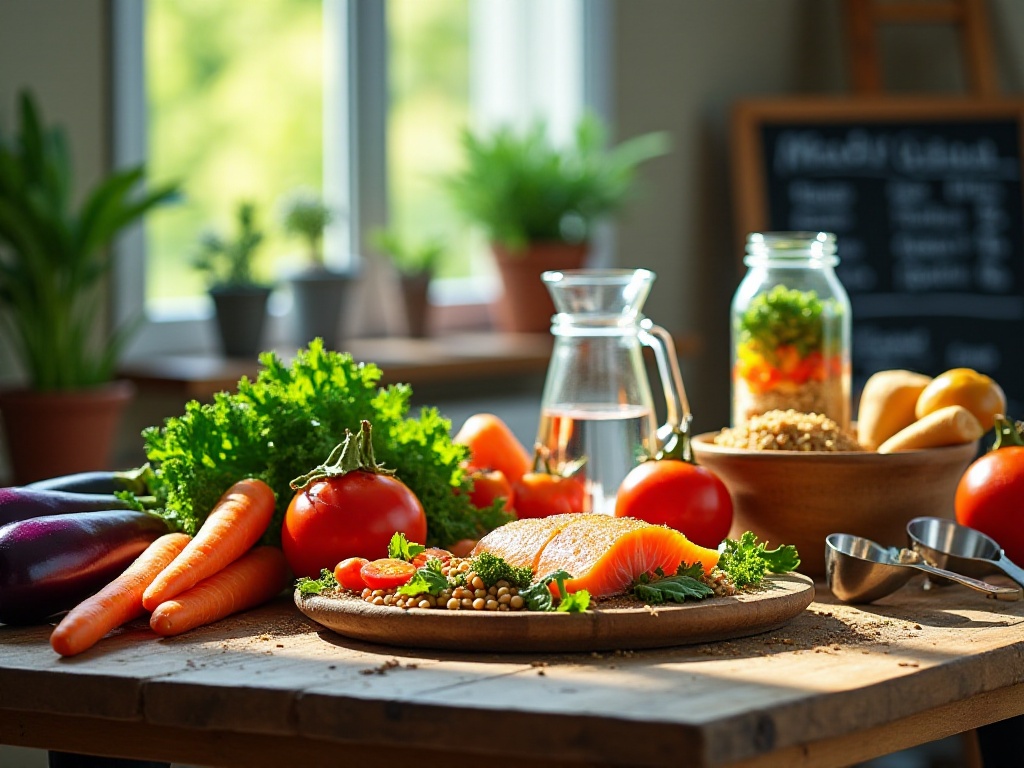
Practical Guide
Now that we know the principles, let's talk about how to put them into practice. I'll share a particularly useful method called the "Rainbow Diet." Simply put, it means putting foods of different colors on your plate. Red tomatoes, orange carrots, green broccoli... vegetables and fruits of each color contain different nutrients, making this combination both nutritionally balanced and visually appealing.
Here's my daily combination: for breakfast, I usually have whole wheat toast with boiled eggs and a fruit salad. The fruit salad includes strawberries, blueberries, and kiwi - colorful and appetite-stimulating. For lunch, brown rice with one meat dish and two vegetable dishes, like steamed bass, stir-fried broccoli, and carrots. Dinner is lighter, usually a bowl of vegetable soup with some soy products.
Beverage choices are also important. I used to drink several cups of bubble tea daily, but I've completely quit now. Instead, I drink water, unsweetened tea, and fresh juice. However, juice should be consumed in moderation since sugar levels rise quickly without fiber. Recently, I've particularly enjoyed making honey-lemon water - it's refreshing and provides vitamin C.
For snacks, my principle is to choose natural ingredients as much as possible. I have nuts during afternoon tea time, and dried fruits when hungry. My former favorite chips have been replaced with homemade baked sweet potato chips - equally satisfying but much healthier.

Life Hacks
The key to maintaining a healthy diet is making it a lifestyle. Here are some particularly useful tips:
Every Sunday evening, I spend an hour doing "weekly meal prep." I prepare main dishes and some easily storable foods for the week, portioned into small servings. This way, even when I'm too tired to cook on workdays, I won't resort to takeout. Specifically, I cook a large pot of brown rice, divided into five portions for freezing. Then I prepare some boiled chicken breast, baked chicken wings, stir-fried leafy greens, all properly portioned. I take one portion to work each morning, and lunch is sorted.
Shopping is also important - I always make a list before going to the supermarket. Remember to leave the fresh food section for last, so refrigerated items won't spoil on the way home. I always buy extra long-lasting vegetables like carrots, potatoes, and pumpkins. This way, I always have vegetables to cook even when I can't go shopping.
About takeout - it's not completely off-limits. But learn to choose wisely; I prioritize options with lots of vegetables. For instance, ordering a salad or choosing steamed dishes are good options. When ordering takeout, I have a habit of checking the ingredients list carefully to avoid dishes with too many seasonings. If I really want fried food, I choose to make it at home on weekends using an air fryer, controlling oil usage while satisfying cravings.
It's also good to have some happiness-boosting kitchen tools. Like my beloved air fryer, which can make crispy food with minimal oil. And a blender for making morning smoothies - nutritious, delicious, and convenient. I recently got a slow cooker too - just put ingredients in before work, and come home to delicious stewed dishes.
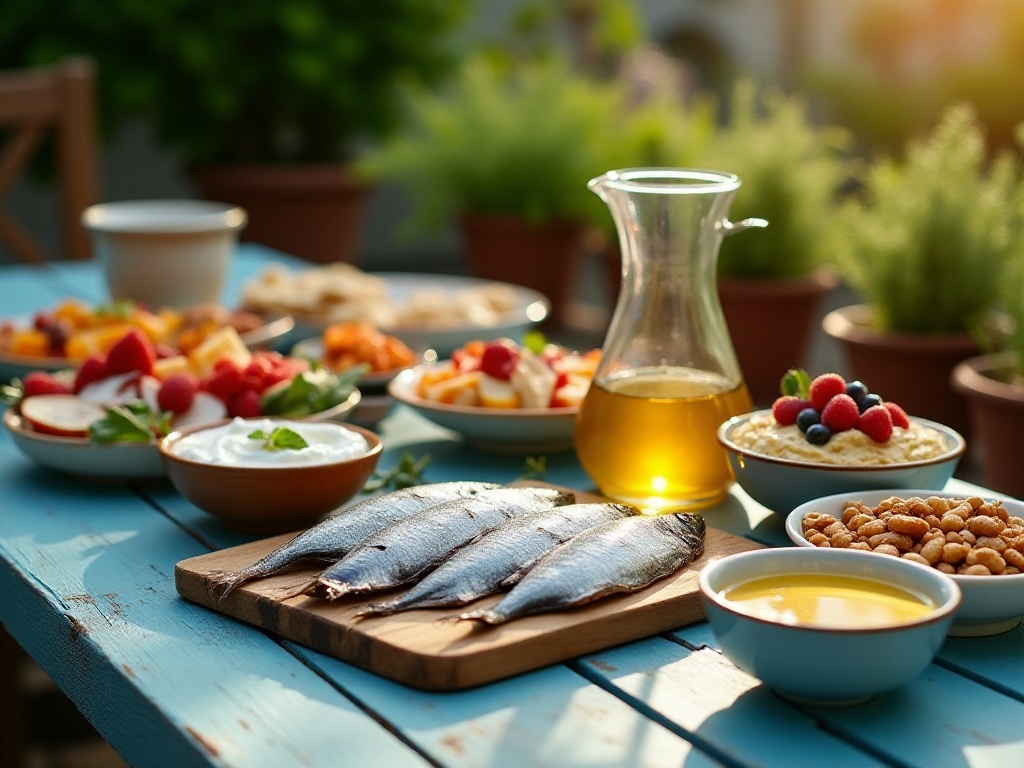
Sustained Motivation
You know what? Maintaining a healthy diet isn't just about figure, but for better quality of life. Research shows that good eating habits can improve work efficiency, enhance sleep quality, and even slow aging.
Now I wake up naturally every morning without an alarm. My skin condition is much better too - acne has disappeared. The most noticeable change is energy levels - I used to get drowsy in the afternoon, but now I'm energetic throughout the workday. Even my mood has improved, probably because eating healthy has made me more confident overall.
I remember when I first started changing my diet habits, I often found it hard to persist. I would be defeated by various temptations, like snacks brought by colleagues or feasts during friend gatherings. But after a while, when you feel the physical changes, like having more energy and better skin condition, you'll find it's all worth it.
Moreover, healthy eating doesn't mean completely giving up good food. I still go for hotpot with friends, just adding more vegetables and ordering less fatty meat. I also give myself small breaks occasionally, like having desserts sometimes. The key is finding balance, making healthy eating enjoyable rather than torturous.
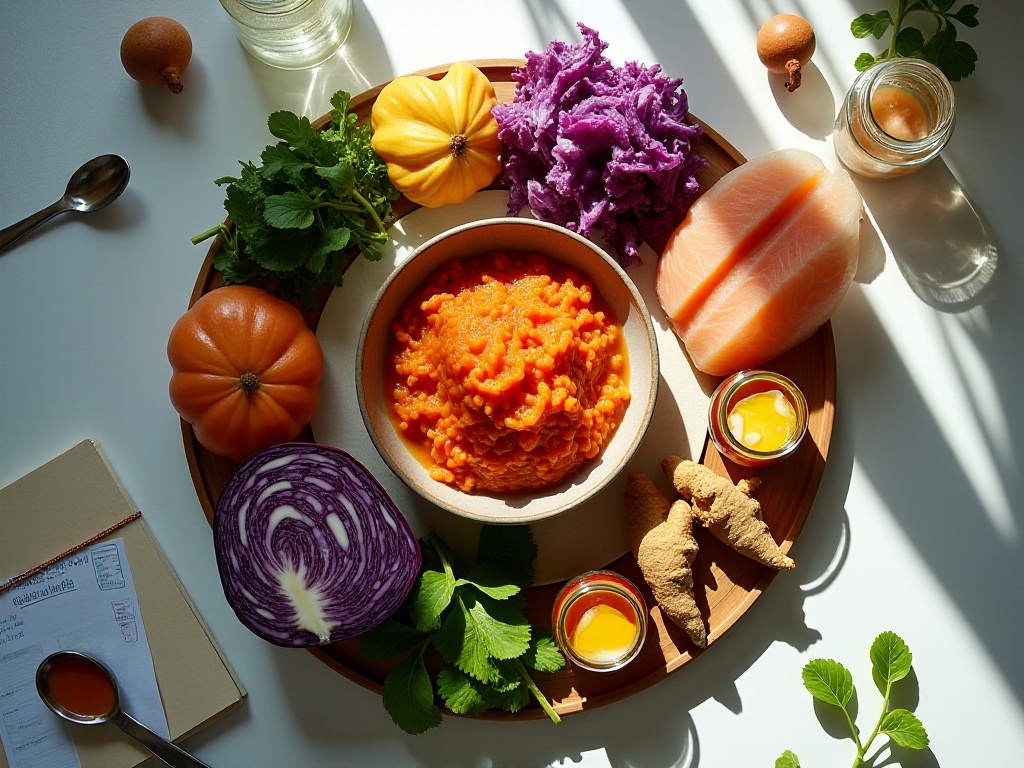
Final Words
Changing dietary habits is a gradual process - don't pressure yourself too much. You can start with a small goal, like eating an extra serving of fruit daily, or replacing white rice with brown rice. Remember, on the path to healthy eating, direction and consistency matter more than speed.
Everyone's physical condition and lifestyle are different, so what suits you is best. You can adjust these suggestions according to your situation. Most importantly, listen to your body and find your own healthy eating style.
Looking back now, changing dietary habits wasn't easy, but definitely worth it. Seeing myself with rosy complexion in the mirror, feeling the endless energy, I'm really grateful to my past self for deciding to change. I hope you, reading this article, can also find your own path to healthy eating.
Do you find these suggestions useful? Feel free to share your thoughts and experiences in the comments. If you have any effective healthy eating tips, please let me know too. Let's encourage each other and progress together on the path to health.






